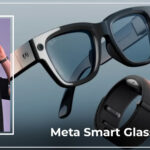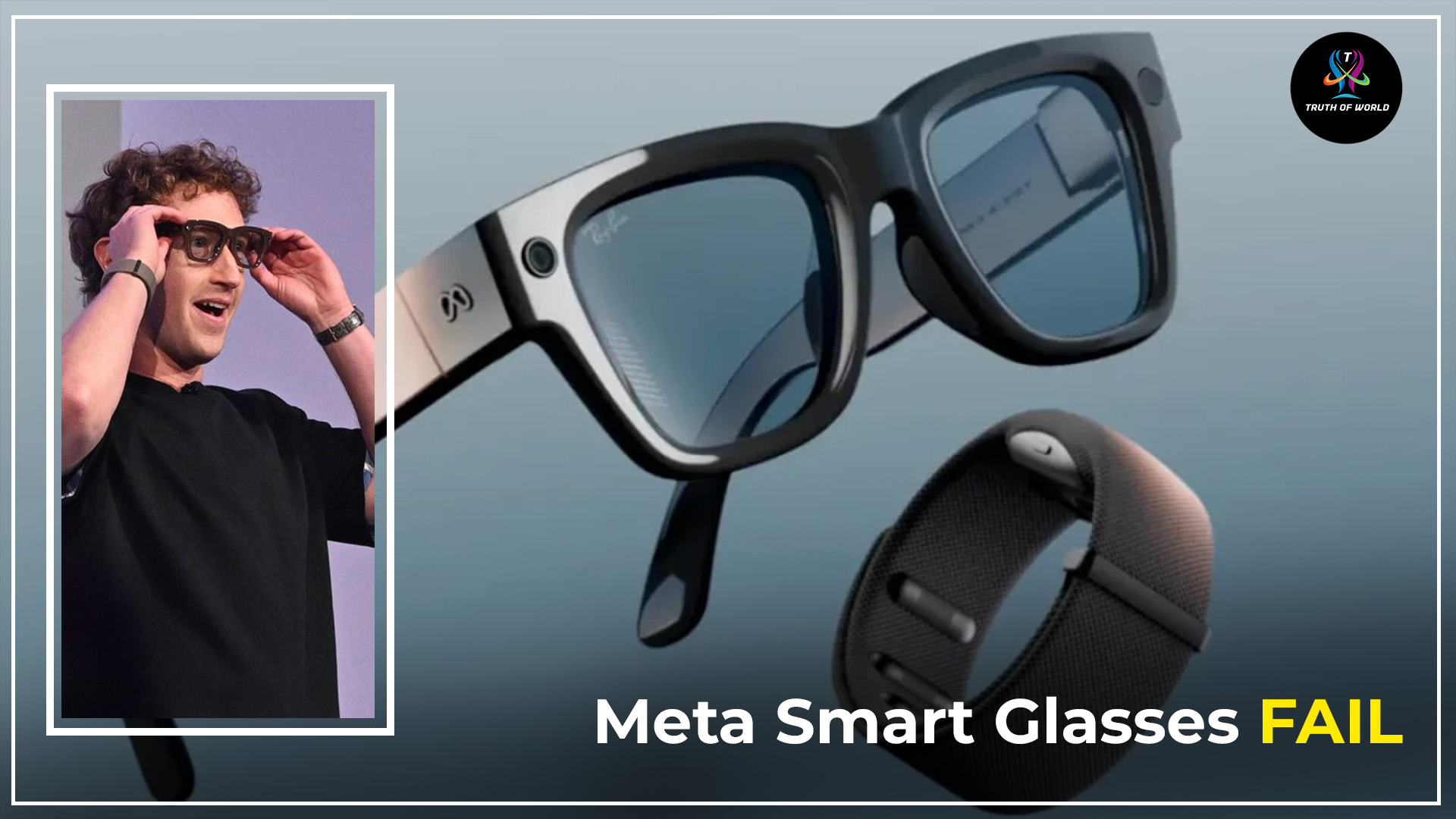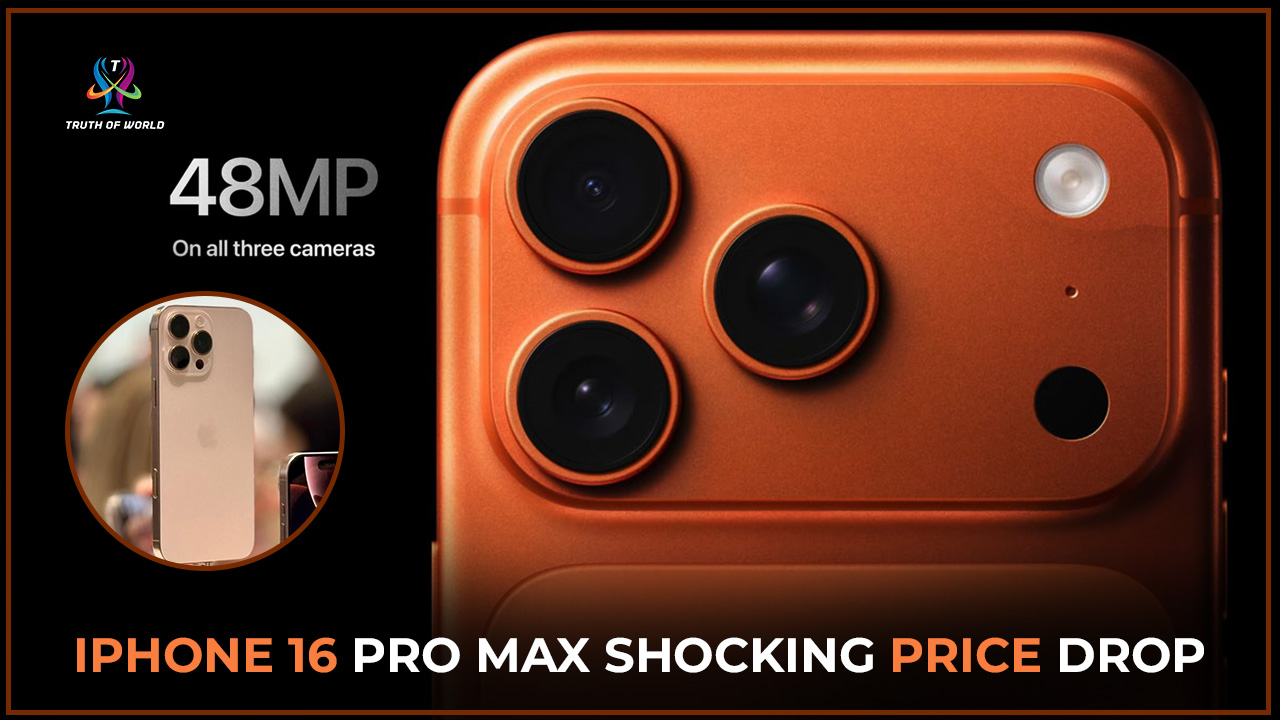By Tech Correspondent | Published: September 24, 2025
Menlo Park, California – Meta’s annual Connect 2025 event was expected to be a turning point for the company’s vision of augmented reality (AR) and artificial intelligence (AI). CEO Mark Zuckerberg unveiled futuristic Ray-Ban Display smart glasses and a Neural Wristband, showcasing how AR could become the next big computing platform.
But what was meant to be a smooth demonstration of innovation turned awkward when multiple live demos failed on stage, raising questions about the reliability of Meta’s ambitious hardware.
Meta’s Big Reveals
Ray-Ban Display Glasses
- Micro-displays inside the lenses for notifications, translations, and real-time updates.
- Built-in Meta AI for answering questions, guiding users, and assisting with tasks.
- Camera and speakers for hands-free video calls and media capture.
Neural Wristband
- Reads electrical signals from the arm muscles.
- Converts subtle hand gestures into navigation commands.
- Aims to remove the need for screens, buttons, or even voice commands.
Oakley Vanguard Model
- Built in collaboration with Oakley.
- Rugged and sweat-resistant, targeted at athletes and outdoor users.
Battery life: Meta claims the glasses last six hours per charge, while the wristband powers through a full day.
When the Demo Collapsed
Two high-profile live demos went wrong in front of a global audience:
- Cooking AI Demo – Chef Jack Mancuso asked Meta AI for a recipe. Instead of giving step-by-step guidance, the AI produced confusing and out-of-order instructions, halting the demo.
- Gesture Video Call Demo – Zuckerberg tried to accept a video call using the Neural Wristband. Although the notification appeared, the call failed to connect, even after multiple attempts.
Why It Happened
Meta later explained the failures:
- Server Overload: When “Hey Meta” was spoken on stage, hundreds of smart glasses in the audience activated at once, overwhelming the servers.
- Race Condition Bug: The glasses’ display went into sleep mode just as a call notification arrived, preventing the interface from loading.
According to CTO Andrew Bosworth, both issues were quickly patched.
Bigger Challenges Ahead
The glitches highlighted ongoing technical hurdles in AR development:
- Hardware-Software Sync – Coordinating displays, processors, and radios with zero lag is extremely difficult.
- Gesture Reliability – EMG-based signals vary with skin type and environment, affecting accuracy.
- Power Management – Saving battery often conflicts with real-time responsiveness.
- Scalability – If hundreds of devices crashed the system, millions could be harder to handle.
Meta’s Response
Meta openly acknowledged the failures. Bosworth said: “Yes, the demo failed, and yes, it was real. But it proves we’re pushing real technology, not stage tricks.”
Zuckerberg defended the vision, calling smart glasses the next major computing platform after the smartphone.
Market and Public Reaction
- Social Media – Clips of the glitches went viral, sparking both criticism and praise for Meta’s willingness to attempt a risky live demo.
- Consumers – Despite the hiccups, the $799 Ray-Ban Display Glasses are attracting strong pre-orders.
- Investors – Meta’s stock remained stable, with analysts calling the failures technical hiccups, not strategic setbacks.
The Road to AR’s Future
The Promise: Smart glasses that replace smartphones, translate conversations, and respond to micro-gestures are closer than ever.
The Challenge: Hardware miniaturization, chip optimization, and reliable connectivity remain major obstacles.
If Meta delivers on fixes quickly, it could dominate the next era of computing. If not, competitors like Apple or Google may step ahead.
Meta Connect 2025 showcased both the promise and pitfalls of AR-powered wearables. The Ray-Ban Display Glasses and Neural Wristband demonstrate how computing could fade into everyday life. Yet the live failures underline that the technology is still evolving.
Whether Meta turns this vision into a mainstream reality—or leaves it remembered for its glitches—remains to be seen.







